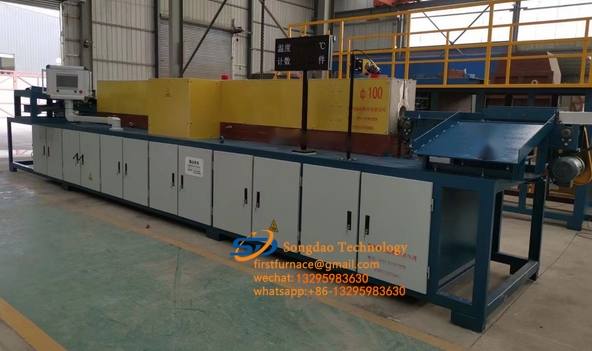- 23
- May
What is the forging temperature of an induction furnace?
What is the forging temperature of an induction furnace?
1. Initial forging temperature of induction heating furnace:
When the initial forging temperature of the induction heating furnace is high, the plastic deformation of the metal material is high, the resistance is small, the kinetic energy consumed during deformation is small, and the processing technology with a larger deformation amount can be used. However, the heating temperature of the induction heating furnace is too high, which not only causes serious air oxidation and carbon increase, but also causes over-temperature and over-burning. When determining the initial forging temperature of the induction heating furnace, the first thing to do is to ensure that the metal material does not cause over-temperature and over-burning, and sometimes it is also limited by the high-temperature dissolved phase. For carbon steel, in order to prevent overheating and overburning, the starting and ending forging temperatures are usually 130-350°C lower than the solidus line of the iron-carbon phase diagram.
The initial forging temperature of the induction heating furnace must also be appropriately adjusted according to the specific conditions. When high-speed hammer forging is used, the thermoelectric effect temperature caused by the high-speed deformation may cause the billet to be over-burned. At this time, the initial forging temperature should be higher than Generally, the initial forging temperature is about 150°C lower.
2. Final forging temperature of induction heating furnace:
The final forging temperature of the induction heating furnace is too high. After the forging is stopped, the internal crystal of the forging will grow again, and the coarse grain structure will appear or the secondary phase will dissolve, reducing the physical properties of the forging. If the final forging temperature of the induction heating furnace is lower than the work hardening temperature, cold work hardening will occur inside the forging billet, which will reduce the plastic deformation and greatly improve the deformation resistance. There is a large internal stress, which causes the forging to crack during the whole process of water cooling or the incident process. On the other hand, incomplete thermal expansion will also lead to asymmetrical forging mechanisms. In order to ensure the work hardening mechanism inside the forging after forging, the final forging temperature of the induction heating furnace is usually 60-150°C higher than the work hardening temperature of the metal material. The deformation resistance of metal materials is often used as the key basis for determining the final forging temperature of the induction heating furnace.

